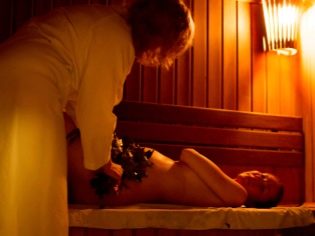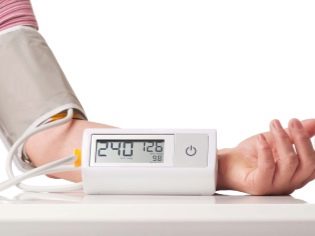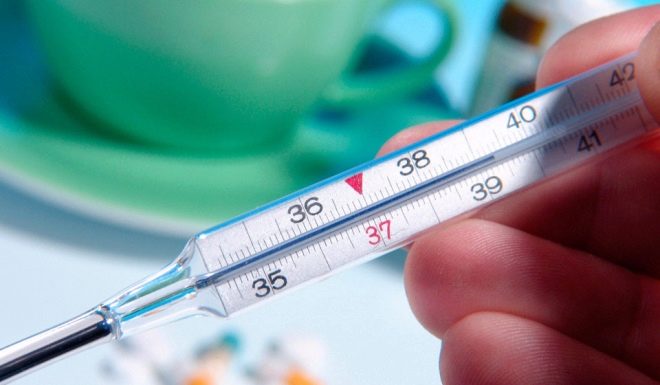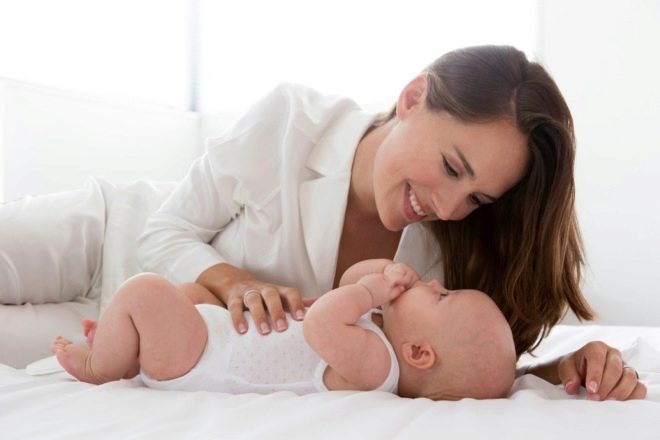Can pregnant women go to the bath and what to consider?
Bath has long been considered a powerful means of healing, relaxation, hardening, enhancing immunity. And the love of visiting the bath in the Russians, one might say, is in the blood. Therefore, the question of the possibility of bath procedures often occurs in pregnant women.
The waiting period of the child is very responsible, imposing restrictions on many areas of the life of the expectant mother. But in relation to the bath there is no consensus on the admissibility of the procedure.
"Pros and cons"
Bath is the effect on the body of high temperatures, humidity and temperature changes, so medicine regards visiting the bath as a physiotherapeutic procedure of high efficiency. There is no single expert opinion on whether or not to bathe in a bath during pregnancy. Doctors say that in each specific case, the decision must be made individually.
First of all, you need to understand that a bath is a general and even generalized concept. In practice, the scrubbers are different. Differences between different types of baths are significant - in the temperature mode, in the degree of air humidity, in the contrast between the climate of double rooms and washing rooms.
For the future mother at any time it is important to breathe in moist air, not hot, and exposure to high temperatures is undesirable in principle. In light of this, in the absence of contraindications for a pregnant woman, a visit to a hammam (Turkish bath) is allowed, but in almost all cases, a visit to the Finnish bath is contraindicated (saunas).
Russian bath is allowed, but with significant restrictions. A public bath is not the best option, since it does not ask for a doctor's certificate, and the expectant mother can get very unpleasant diseases, such as scabies or pediculosis.
If a woman is healthy, doctors have not diagnosed her with pathologies of pregnancy and fetal development; if she herself does not have chronic illnesses, the bath will only help her. Such an effect helps to improve blood circulation, trains the respiratory organs, has a beneficial effect on the skin condition, expanding the pores.
Bathing procedures are an excellent means of hardening the body; accordingly, it can be an effective prevention of acute respiratory viral infections, flu, and colds, which are dangerous for women in the “interesting position”.
A visit to the bath helps to relax, put in order the nervous system, improve sleep and well-being, mood.
But, like all useful, but popular, Bath procedures during pregnancy need to be agreed with your doctor. If you ignore this requirement and do not take into account the initial health of the future mother, the consequences of the bath day can be very sad: high temperature and high humidity create additional stress for the woman’s body, which is fraught with hypertonicity of the uterus, increased body temperature, increased blood pressure and circulatory disorders.
If there are inflammations in a woman’s body, visiting a washing facility can increase pathological processes.. It can cause miscarriage, late miscarriage, premature birth. Therefore It is unreasonable, irresponsible and dangerous to go to the bathhouse without having received the permission of a doctor.
Absolute and relative contraindications
A visit to the bath is strictly prohibited for pregnant women who have chronic diseases of the heart, kidneys, liver, lungs, and blood vessels. The pronounced effect of bath procedures can cause exacerbation of the disease, even if the remission period lasted for many years. The fact is that pregnancy itself increases the risk of exacerbations due to the load on the organs and systems of the female body. Bath can act as a trigger.
Chronic illnesses are an absolute contraindication, the following situations can be attributed to the same group of contraindications:
epilepsy;
cancer and precancerous conditions and tumors in the body of the future mother;
hypertension and a tendency to increased blood pressure;
bronchial asthma;
phlebeurysm;
acute and chronic hemorrhoids;
the threat of spontaneous miscarriage;
cervical insufficiency;
full or partial placenta previa;
multiple pregnancy;
pregnancy occurring in the IVF treatment protocol;
first weeks of pregnancy;
last month before giving birth.
Also, in the bathing room and steam room is not recommended to go on relative contraindications. Relative they are called for temporary. After the end of the state, a visit to the bath may be allowed in the absence of absolute contraindications.
These contraindications include:
any inflammatory process in the body;
early toxicosis;
signs of preeclampsia in the second and third trimesters;
swelling;
abnormal discharge from the genitals;
period after any surgical operation (up to 8 weeks);
increased body temperature (above 37.5 degrees);
intestinal upset, nausea, diarrhea, constipation.
Even if the doctor allowed to go to the bath, it is important for the woman to listen carefully to her well-being. If it is not too good, then it is better to refuse to visit the bath on the chosen day.
Rules for expectant mothers
If you are allowed to visit the bath, then the observance of simple but very important rules will help to avoid possible negative consequences.
Follow the conditions - the temperature in the sauna room should not exceed 50 degrees Celsius. If the planned alternation of temperatures, but it should be smooth and insignificant (up to a maximum of 70 degrees Celsius). It is not necessary to jump from a steam room to a snowdrift or a cold pool.
Take accompanying person with you. - it can be a spouse, mother, sister or girlfriend. Someone adult and adequate must be present with you, because the state of health can change at any time (a jump in blood pressure, the development of shortness of breath, an acute allergic skin or edematous reaction, a sharp attack of headache, abdominal pain, the development of hypertonus are reasons assistance was provided).
After visiting the steam room, be sure to take a cool (but not cold!) Shower or douche. Jumping into the cold pool after the steam room is prohibited. Warm or cool water will help eliminate excess heat.
Steaming for the whole bath day of a pregnant can be no more than 10 minutes. This time should be divided into several visits to the steam for 2-3 minutes. Outside a steamy woman can bathe in a bath for as long as she wants, there are no separate restrictions on this.
In the steam room you can not lie on your back, it can lead to compression of the inferior vena cava by the large uterus, which can cause serious consequences, even collapse.
In order not to overheat, visiting the bath, use special bath felt caps on your head, sit on warm surfaces on a previously laid clean sheet. If necessary, cover the shoulders and back with a wet sheet.
Bring a bottle of clean non-carbonated drinking water, dogrose broth, dried fruit compote without sugar or homemade berry juice and be sure to drink to prevent dehydration in the process of intense sweating.
Make sure you have non-slip rubber shoes. with a rough sole - slippers. A fall on a slippery wet floor can have very negative consequences for the woman herself and for her baby.
Often women ask how often you can go to the bath while the child is waiting, because many people are used to doing it weekly.
During pregnancy, it is undesirable to visit the bath more than once every 10 days, that is, three times a month.
If before the pregnancy the woman did not go to the bath and was not steamed, it is dangerous to start it while waiting for the child at any time. A bath visit is allowed if a woman was a regular at bath establishments even before the onset of an “interesting position”, since her body is adapted to such loads.
Features of the procedure in different trimesters
When deciding on a visit to the bath, the expectant mother should take into account not only her own well-being and the opinion of the attending doctor, but also the peculiarities of the gestation period she is on.
- In the first trimester to wash in the bath should be with extreme caution. In the first 8 weeks of pregnancy, a visit to the bath is generally contraindicated. At this time, the process of embryogenesis, very important and responsible. A developing embryo is not yet protected by the placenta, since the placentation is underway, and therefore any change from the outside can cause spontaneous abortion, the formation of placental defects.
- In the second trimester there are fewer dangers, and therefore a woman can attend a bath if there are no contraindications. Compliance with the above rules is mandatory. Then washing in the bath will be a pleasant and beneficial healing procedure.
- In the 3rd trimester, even experienced banschitsam recommended to abandon the steam room, especially in the period from 32 to 36 week of pregnancywhen premature birth can cause death or serious illness in a child. After 37 weeks, the fetus is fully mature, ready for independent existence outside the womb, and there are no such strict restrictions on the bath. Temperature changes in the bath can cause circulatory disorders in the uteroplacental system, which can cause placental abruption. And therefore, in the third trimester, you should avoid a contrast shower, too hot bath.
After 37 weeks, it is not necessary to go to the bath after the cork mucous discharge, as well as in case of leakage of amniotic fluid - water procedures can lead to the development of an intrauterine infection, because the fetus after corking or perforation of the fetal membranes is more vulnerable to germs, viruses and fungal flora from the outside.
After childbirth
If a woman loves bathing procedures very much and is not ready to part with them for a long time, then she is interested in the question when, after giving birth, you can bathe and bathe again. When breastfeeding specific contraindications to this is not. It is only important to wait until the body recovers after the birth process.
After a natural childbirth, a woman may attend a steam room in about a month. provided that she did not have postpartum complications and the postpartum discharge completely ceased - lochia.
After a cesarean section, the break will have to be made longer, because it takes time to restore not only external but also internal sutures. It is recommended to go to the bathhouse and steam room for women who have undergone operative labor no earlier than after 3 months, and also on condition that the postpartum period was uneventful.
Before the first visit to the bath in the postpartum period, it is advisable to visit the gynecologist to make sure that everything is in order with women's health.
Bath procedures when planning pregnancy
If a woman is just planning to conceive a child and is preparing for this event, then she can walk as much as she wants into the bath and steam, swim in the pool, wipe with snow at the proper level of quenching. This will only benefit.
It is only important to know that high temperatures and their significant fluctuation are not very desirable in the second half of the menstrual cycle, since a woman may already be pregnant, but just does not know about it yet.
It is believed that a visit to a steam room or sauna may adversely affect the implantation process, which occurs about a week after conception, and the fetus may not be fixed due to too intensive blood circulation caused by bath procedures. In the first half of the menstrual cycle (before ovulation), there are no restrictions if the woman is healthy.
It is quite another thing - men. If a couple plans to conceive, then visiting the bath and sauna should be abandoned at the planning stage, namely, the stronger sex.. High temperatures reduce the production of viable and healthy sperm and lead to the death of germ cells. Bath procedures do not contribute to increasing male fertility. This is important to consider, especially for couples who have been trying to conceive a heir or heiress for a long time.






















